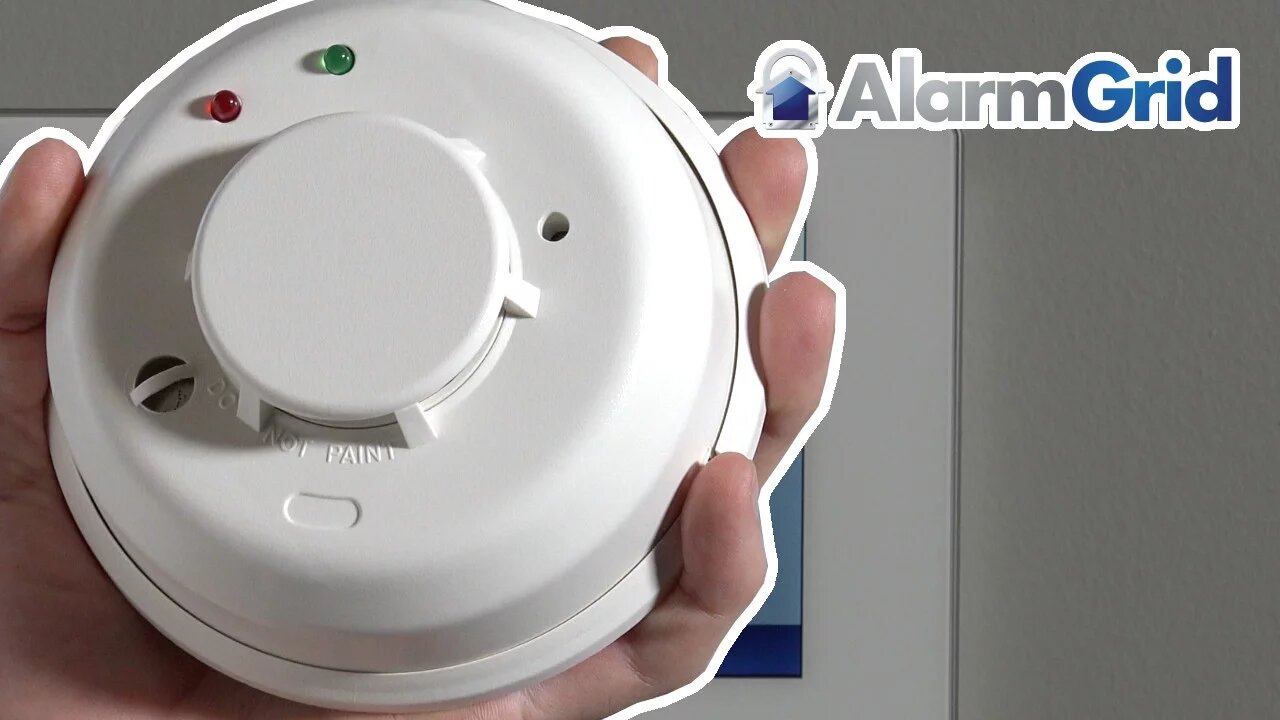Premium Only Content

Honeywell 5808W3: Program to Lyric
Add photoelectric fire protection using our video guide for programming the Honeywell 5808W3 to the Lyric security system.
Alarm systems protect your location from more than potential intruders. Your system can also keep your family safe from fire, smoke and high heat. This video provides an in-depth look at the 5808WE smoke and fire detector, one of the Honeywell’s most popular models.
Your home or business almost certainly has smoke alarms already installed as required by building codes. But adding a 5808W3 detector provides a different type of protection.
Smoke detectors can either be photoelectric or ionized. Typically, most home detectors are ionized. They use electronically charged particles to detect smoke in the air. Ionized detectors are best for detecting fast-moving, tall flames, but they aren’t as effective as detecting smoldering fires.
Photoelectric detectors use light beams to detect smoke. They can detect high flames accurately, but they’re also great at catching small, smoldering fires. Lit cigarettes, electric blanket fires and other common household accidents can be detected before they cause major damage. That’s why we recommend adding the photoelectric protection of the 5808W3 to your existing alarm system.
To install the smoke detector, you’ll first remove the yellow dust cover. Then you’ll need to activate the battery. The video shows you how to twist open the device. The included battery has a small cardboard pull tab which you need to remove to supply power.
Once the battery is powered up and mounted on the wall, it’s ready to be connected to the system. We’ll walk you through each step. Basically, you’ll use your installer code to add the detector to a zone. You can use any zone after the template zone.
Many devices can connect to your alarm system automatically. Unfortunately, the auto-enroll option isn’t available for the 5808W3. Instead, you’ll need to enter the device's serial number into the unit manually.
As we describe in the video, there’s a limited auto-enroll option using the tamper setting on the detector. The problem is this adds the detector to loop four. In order to detect smoke and heat, the 5805W3 needs to be on loop one.
After installation, the video guide shows you how to name the sensor. This is important because, when an alarm activates, the display will tell you where to find the potential problem. You’ll want to label each zone accurately and descriptively.
Aside from smoke and fire, the 5805W3 will also send an alert if the temperature in the room exceeds 135 degrees. Plus, the detector has “rate of rise” detection. Quickly rising temps can indicate a small fire which has yet to smoke or produce tall flames.
Finally, the video covers the difference between “Fire with Verification” and “Fire without Verification.” This setting helps prevent frequent false fire alarms in kitchens and similar locations. We discuss the reasons why you’ll most likely want to use “Fire without Verification,” as well as the few situations suitable for Verification.
Your alarm system can easily protect you from far more than break-ins. Even if you already have smoke alarms in your house, the photoelectric 5808W3 fire and smoke detector is a simple way to add an extra layer of fire protection.
-
 3:39
3:39
Alarm Grid Home Security DIY Videos
1 year agoQolsys IQ Panel 4: Using Dual Path Monitoring
21 -
 5:40
5:40
Alarm Grid Home Security DIY Videos
4 years agoHoneywell Lyric AT&T LTE 10 1 Kit
9 -
 1:03
1:03
thegrovefitness
3 years agoProgram
53 -
 9:23
9:23
Alarm Grid Home Security DIY Videos
4 years agoHoneywell SiXGB: Program to a Lyric Security System
12 -
 1:03
1:03
thegrovefitness
3 years agoProgram
115 -
 LIVE
LIVE
The Bubba Army
2 days agoShould RaJa Jackson Be Arrested? - Bubba the Love Sponge® Show | 8/25/25
5,537 watching -
 LIVE
LIVE
FyrBorne
12 hours ago🔴Warzone M&K Sniping: Builds So Strong They Think I'm Hacking
169 watching -
 4:23
4:23
Blackstone Griddles
14 hours agoEasy Salmon Dinner on the Blackstone Griddle
19.4K1 -
 8:10
8:10
WhaddoYouMeme
1 day ago $0.02 earnedChristians, Before You See “Testament”, Watch this!
2.34K2 -
 8:42
8:42
Freedom Frontline
13 hours agoDurbin’s Trump Smear Video Just HUMILIATED Him in the Senate
3.62K